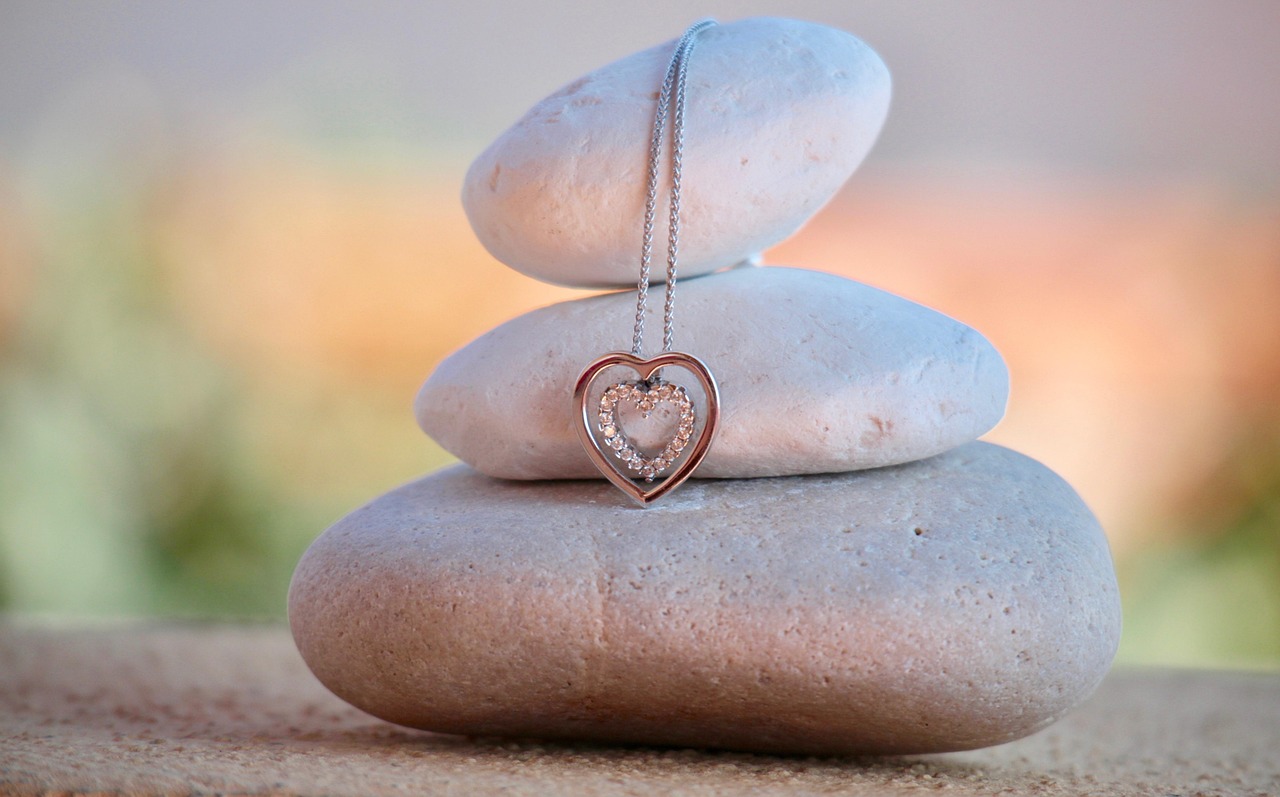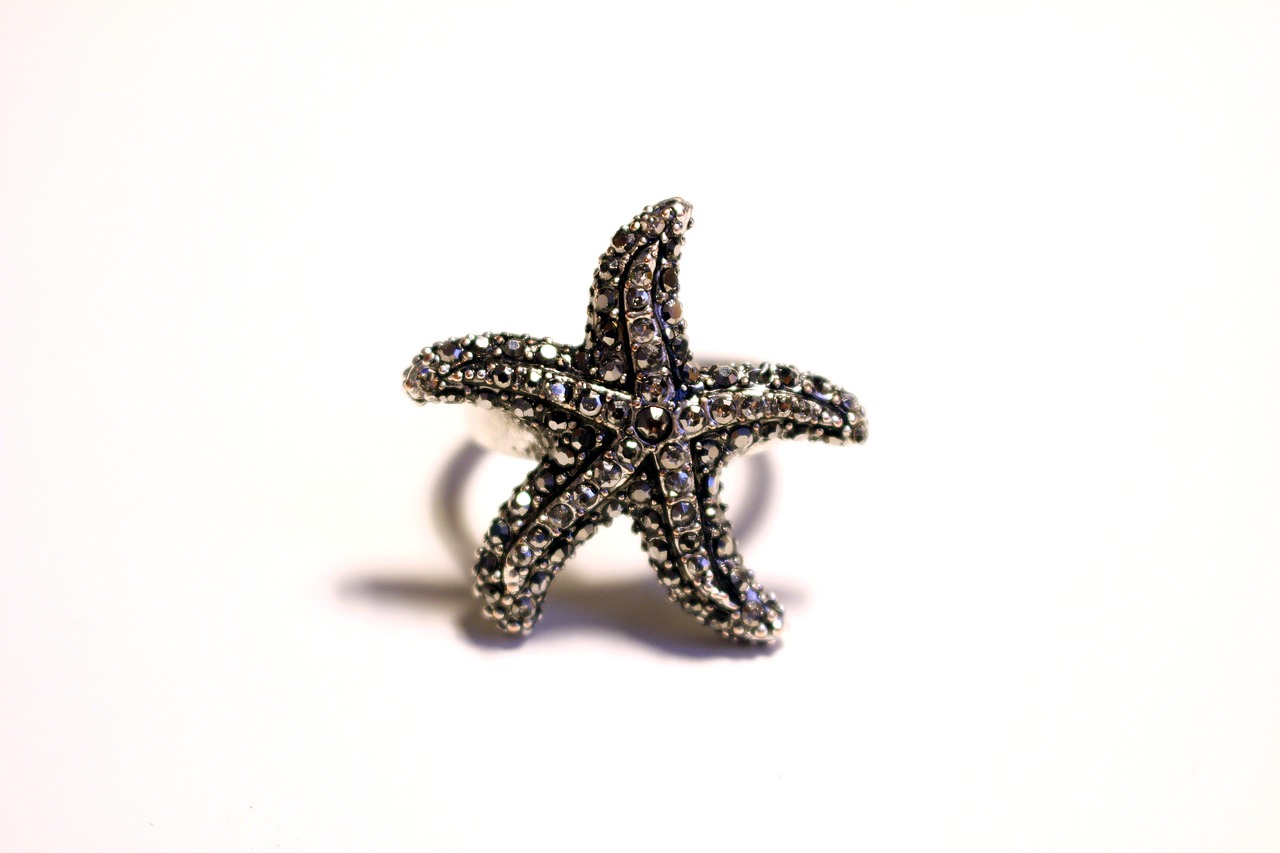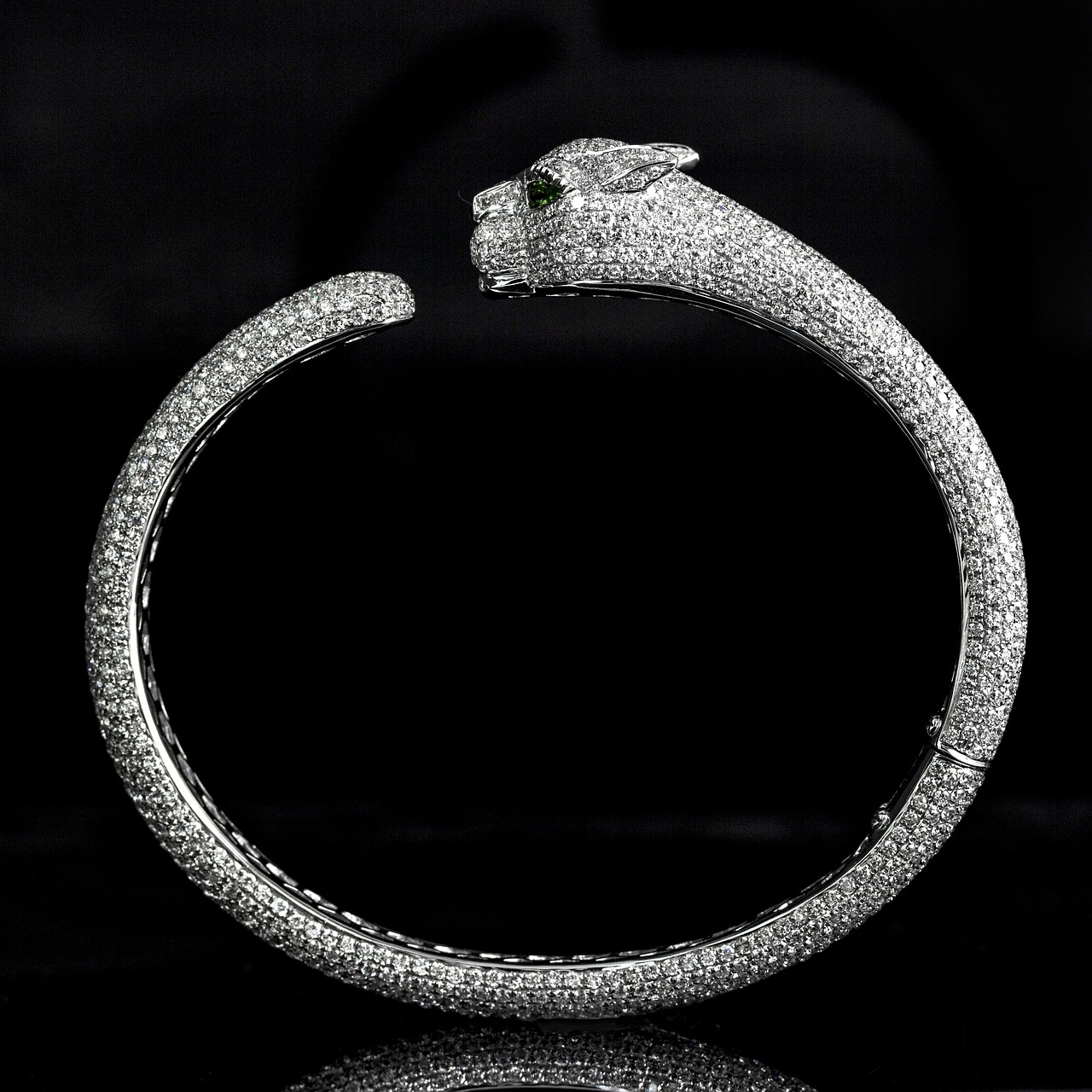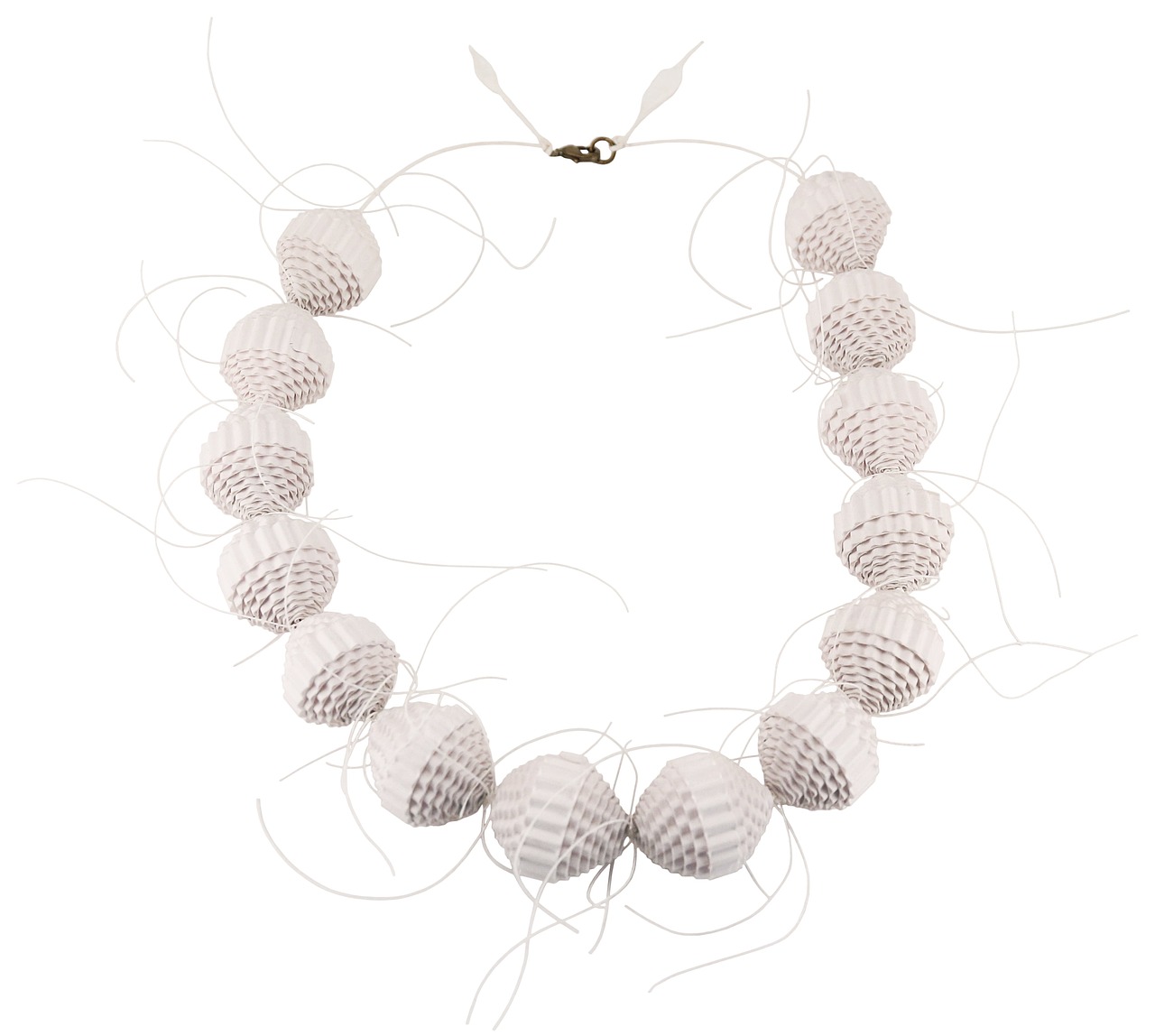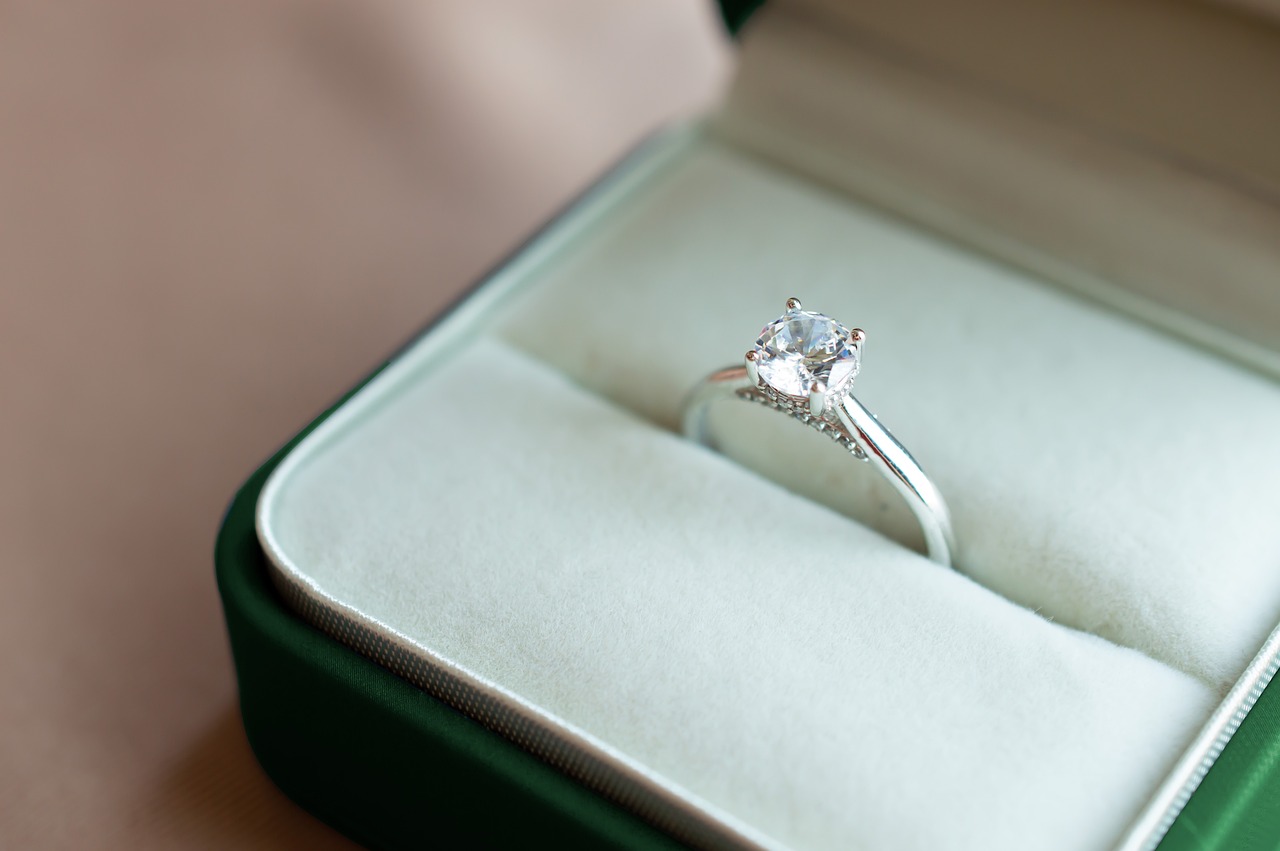This article explores various avenues for selling jewelry, comparing online platforms and in-person options to help you maximize your profits while ensuring a smooth selling experience.
When considering where to sell your jewelry, online platforms offer a plethora of options. Some of the most popular marketplaces include:
- eBay – A well-known auction site that allows for competitive bidding.
- Etsy – Perfect for handmade and vintage jewelry, attracting a niche audience.
- Facebook Marketplace – Local selling with the potential for quick transactions.
- Poshmark – A social commerce platform where you can sell jewelry alongside fashion items.
These platforms provide a user-friendly interface and a vast audience, making it easier to reach potential buyers.
Deciding whether to sell your jewelry online or in-person requires careful consideration of various factors:
- Convenience – Online selling allows you to reach buyers anytime, while in-person selling may require scheduling appointments.
- Negotiation – In-person sales offer immediate feedback and bargaining opportunities.
- Security – Online transactions can pose risks, while cash transactions in-person can feel safer.
Assess your comfort level and selling goals to make the best choice.
Selling jewelry online has numerous advantages:
- Wider Audience Reach – You can attract buyers from around the globe.
- Convenience – List your items from the comfort of your home.
- Competitive Pricing – Online platforms often have lower fees, allowing you to set more attractive prices.
Online valuation is a straightforward process that often involves:
- Using digital appraisal tools available on various platforms.
- Consulting with experts through video calls or chat.
- Reviewing comparable sales to gauge market value.
While there are benefits, it’s essential to consider the risks:
- Scams – Be wary of buyers who request unusual payment methods.
- Shipping Issues – Items can get lost or damaged during transit.
- Return Policies – Understand the site’s return policy to avoid complications.
In-person selling comes with its own set of benefits:
- Immediate Cash – You receive payment immediately upon sale.
- Personal Interaction – You can build trust with buyers through face-to-face communication.
- Direct Negotiation – You have the opportunity to negotiate prices on the spot.
Consider these venues for in-person selling:
- Pawn Shops – Fast cash, but often at lower prices.
- Jewelry Stores – Some may buy directly from you or assist in selling.
- Estate Sales – Great for selling multiple items at once.
Preparation is key to maximizing your sale price. Follow these steps:
- Clean your jewelry to enhance its appearance.
- Appraise your items to understand their value.
- Present your jewelry attractively, whether in-person or online.
Several factors can affect how much you can sell your jewelry for:
- Materials – The type of metal and stones used play a significant role.
- Craftsmanship – Higher quality craftsmanship can demand higher prices.
- Brand Reputation – Well-known brands often sell for more.
- Market Demand – Trends can influence how much buyers are willing to pay.
Safety is crucial. Here are some best practices:
- Use Secure Payment Methods – Avoid cash for online transactions; consider PayPal or escrow services.
- Meet in Public Places – If selling in-person, choose well-lit, busy locations.
- Trust Your Instincts – If something feels off, don’t proceed with the transaction.
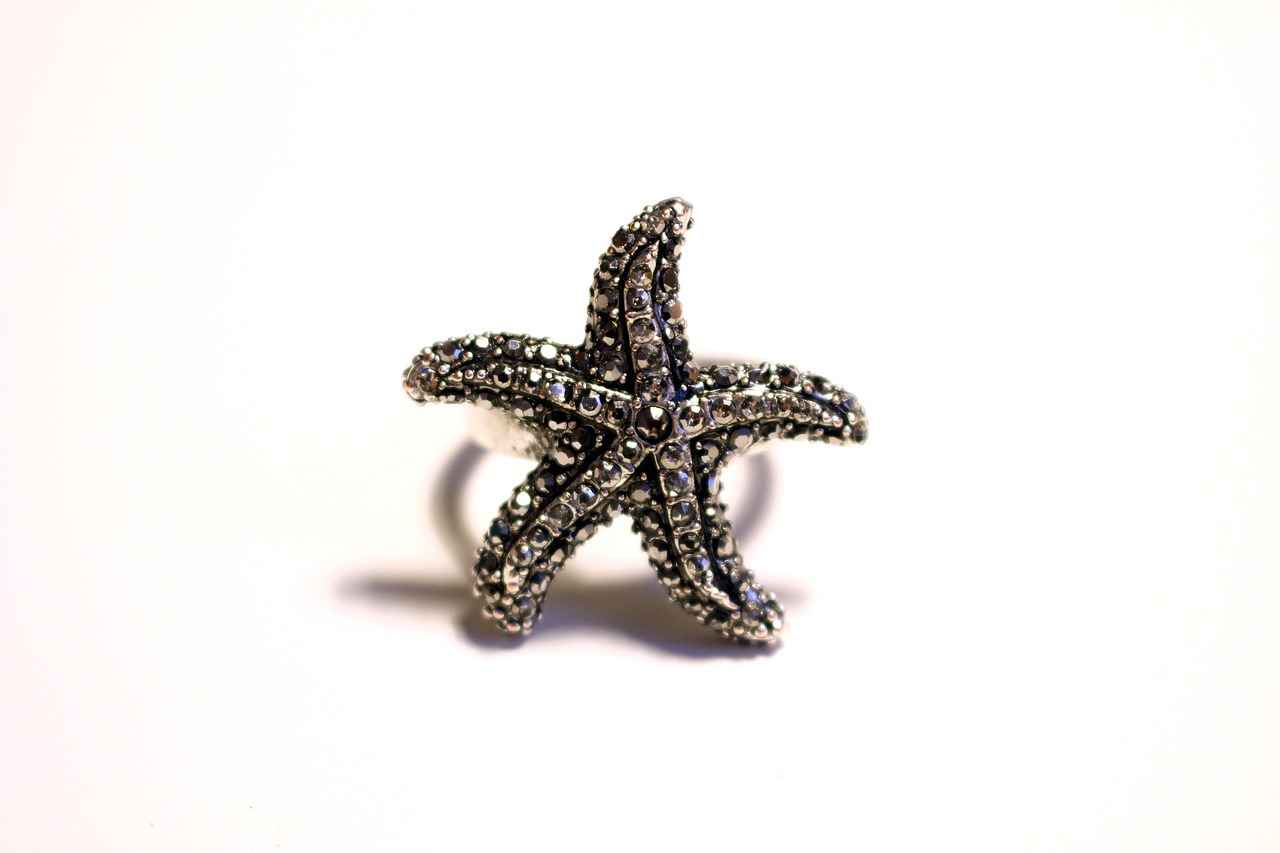
What Are the Best Online Platforms for Selling Jewelry?
In today’s digital age, selling jewelry online has become increasingly popular, providing sellers with a convenient way to reach a global audience. Whether you are looking to sell vintage pieces, handmade jewelry, or high-end items, numerous platforms cater to various needs. Below, we explore the best online marketplaces for selling jewelry, highlighting specialized sites and general e-commerce platforms that can help you connect with potential buyers effectively.
When it comes to selling jewelry online, choosing the right platform is crucial. Here are some of the top options:
- Etsy: Ideal for handmade and vintage jewelry, Etsy allows artisans to showcase their unique creations. The platform has a strong community of buyers looking for one-of-a-kind pieces.
- eBay: A versatile platform where you can auction your jewelry or sell it at a fixed price. eBay’s vast user base provides exposure to a wide audience, making it a popular choice for sellers.
- Amazon: While primarily known for general merchandise, Amazon has a dedicated section for jewelry. Sellers can leverage Amazon’s extensive reach, although competition can be fierce.
- Ruby Lane: This platform specializes in antiques and vintage items, making it a perfect fit for sellers with unique or historical jewelry pieces. Ruby Lane caters to a niche audience that appreciates quality craftsmanship.
- Poshmark: Originally focused on fashion, Poshmark now includes jewelry. It offers a social shopping experience, allowing sellers to engage with buyers through sharing and commenting.
- Facebook Marketplace: A local selling option, Facebook Marketplace allows you to list your jewelry for sale in your community. This can lead to quick sales without shipping hassles.
- 1stdibs: A luxury marketplace for high-end jewelry, 1stdibs connects sellers with affluent buyers. This platform is ideal for those looking to sell fine jewelry and antiques.
Each of these platforms has its strengths and weaknesses, and the best choice depends on your specific jewelry pieces and target audience. Consider factors such as fees, audience reach, and ease of use when making your decision.
Once you choose a platform, it’s essential to create compelling listings that attract buyers. Here are some tips:
- High-Quality Photos: Use clear, well-lit images that showcase your jewelry from multiple angles. Good photography can significantly enhance your listing’s appeal.
- Detailed Descriptions: Provide thorough descriptions that include materials, dimensions, and any unique features. This helps buyers make informed decisions.
- SEO Keywords: Incorporate relevant keywords in your titles and descriptions to improve search visibility. Think about what potential buyers might search for.
- Competitive Pricing: Research similar items to set a competitive price. Consider offering discounts or promotions to attract buyers.
By leveraging these strategies, you can enhance your chances of selling your jewelry quickly and at a desirable price.
Before diving into online jewelry sales, consider the following:
- Market Research: Understand current trends and pricing in the jewelry market to ensure your items are competitively priced.
- Shipping and Handling: Plan for secure packaging and shipping methods to protect your jewelry during transit.
- Fees and Commissions: Be aware of any fees associated with your chosen platform, as these can affect your profit margins.
By carefully selecting the right platform and optimizing your listings, you can effectively reach potential buyers and maximize your profits when selling jewelry online.
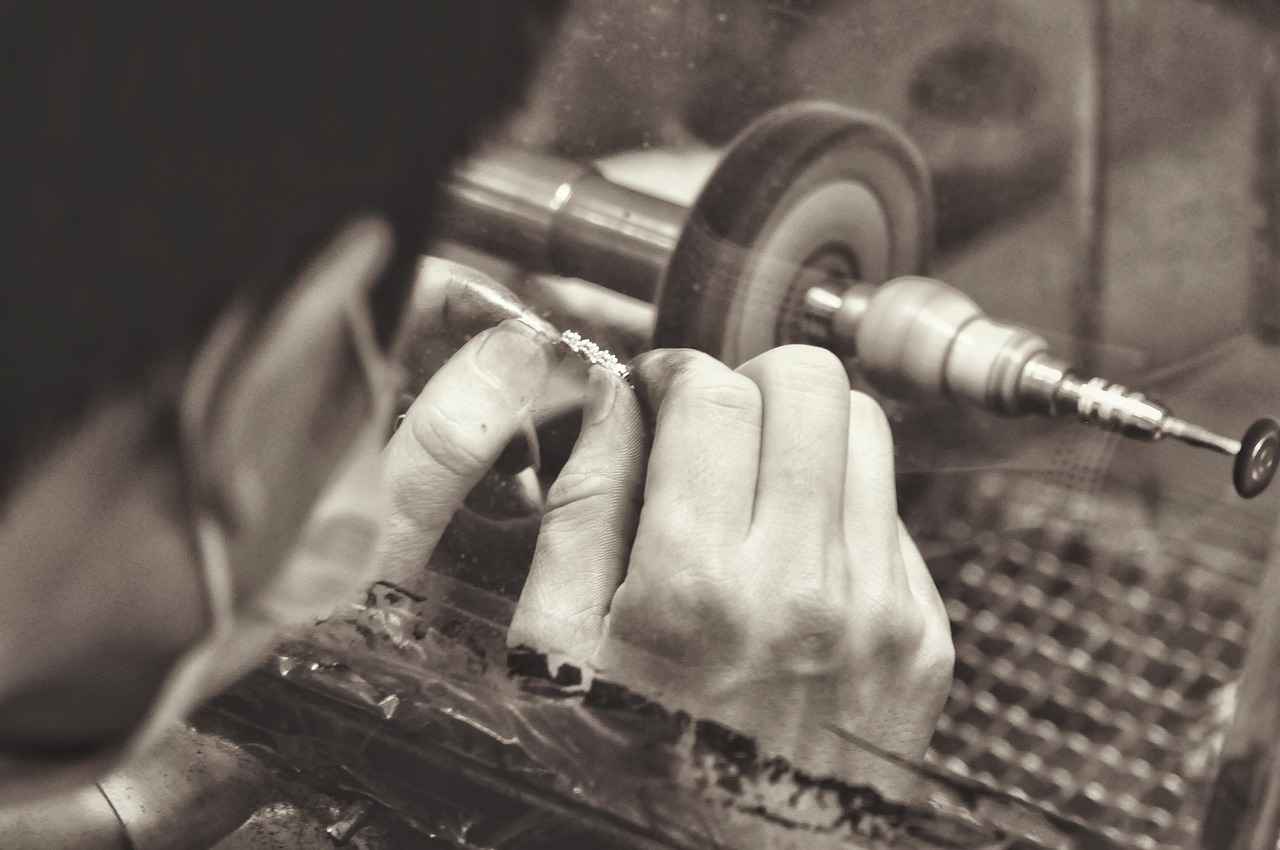
How to Choose Between Online and In-Person Selling?
When it comes to selling jewelry, choosing the right method can significantly impact your success. Both online and in-person selling have their unique advantages and disadvantages. Understanding these can help you align your selling strategy with your personal goals and comfort level.
- Wider Audience Reach: Selling jewelry online allows you to connect with potential buyers from around the world, significantly increasing your chances of finding the right customer.
- Convenience: You can list your items at any time, manage your inventory from home, and avoid the hassle of commuting to physical locations.
- Lower Overhead Costs: Online platforms often have lower fees compared to physical stores, meaning you can retain more of your profits.
- Variety of Platforms: There are numerous online marketplaces, from specialized jewelry sites to general e-commerce platforms, giving you flexibility in choosing where to sell.
- Scams and Fraud: The online marketplace can attract dishonest buyers, making it crucial to implement safety measures.
- Shipping Risks: Sending jewelry through the mail poses risks, including loss or damage during transit.
- Less Personal Interaction: Online sales can feel impersonal, lacking the direct engagement that can help build trust with buyers.
- Immediate Payment: Selling in-person often means you receive cash immediately, providing instant gratification.
- Personal Negotiation: You can negotiate directly with buyers, potentially leading to better prices.
- Building Relationships: Face-to-face interactions can foster trust and rapport, encouraging buyers to purchase.
- Limited Audience: Your customer base is confined to local buyers, which may reduce your chances of achieving the best price.
- Time-Consuming: Traveling to various locations and waiting for buyers can take time, which some sellers may find frustrating.
- Potential for Lower Offers: In-person buyers may offer less than online buyers due to their need to resell at a profit.
Ultimately, the choice between selling jewelry online or in-person depends on your personal preferences and selling goals. If you value convenience and a broader market, online selling may be the way to go. However, if you prefer immediate transactions and personal interactions, in-person selling might suit you better. Assess your comfort level with each method and consider testing both avenues to see which yields the best results for you.
What Are the Benefits of Selling Jewelry Online?
Selling jewelry online has become increasingly popular, offering numerous advantages that cater to both seasoned sellers and newcomers alike. In this section, we will delve into the benefits of selling jewelry online, highlighting how it can enhance your selling experience and maximize your profits.
One of the most significant benefits of selling jewelry online is the convenience it provides. Sellers can list their items from the comfort of their homes, avoiding the hassle of traveling to physical stores. This accessibility allows for a more flexible selling schedule, enabling sellers to reach potential buyers at any time of day or night.
Online platforms break down geographical barriers, allowing sellers to connect with a global audience. This wider reach increases the chances of finding the right buyer who appreciates the unique qualities of your jewelry. Unlike traditional in-person selling, where your market is limited to local customers, online selling opens up opportunities to attract buyers from different regions and countries.
When selling jewelry online, sellers often have the advantage of setting competitive prices. Many online marketplaces allow you to compare similar items, giving you insights into current market trends and pricing strategies. This transparency helps you adjust your prices accordingly, ensuring that you remain competitive while still maximizing your profit margins.
Online platforms provide sellers with the ability to showcase their jewelry through high-quality images and detailed descriptions. This visual presentation is crucial in attracting potential buyers, as it allows them to see the intricate details and craftsmanship of each piece. Additionally, sellers can tell a story about their jewelry, which can create an emotional connection with buyers and enhance its perceived value.
Operating online can significantly reduce overhead costs associated with traditional brick-and-mortar stores. Sellers do not need to worry about rent, utilities, or maintaining a physical inventory in a storefront. This reduction in costs can lead to higher profit margins, making online selling a financially attractive option.
Many online selling platforms offer tools and resources to assist sellers in managing their sales effectively. From inventory management systems to marketing tools, these resources can help you streamline your selling process. Additionally, some platforms provide analytics that allows you to track your sales performance and customer engagement, enabling you to make informed decisions about your selling strategies.
Online selling also provides flexible payment options for both sellers and buyers. Many platforms offer various payment methods, including credit cards, PayPal, and other digital wallets. This flexibility can enhance the buying experience, making it easier for customers to complete their purchases and for sellers to receive payments promptly.
Selling jewelry online allows you to establish your own brand and create an online presence. By curating a unique storefront and engaging with customers through social media and marketing campaigns, you can cultivate a loyal customer base. This brand recognition can lead to repeat sales and referrals, further enhancing your profitability.
In conclusion, the benefits of selling jewelry online are numerous and compelling. From the convenience and wider audience reach to competitive pricing and reduced overhead costs, online selling offers a dynamic platform for jewelry sellers. By leveraging these advantages, you can maximize your profits and create a successful online jewelry business.
How Does Online Valuation Work?
Understanding the process of online valuation is crucial for anyone looking to sell jewelry effectively. With the rise of digital platforms, assessing your jewelry’s worth has become more accessible than ever. This article delves into the various methods you can use to evaluate your jewelry online, including the use of digital tools and consultations with experts.
Online valuation refers to the process of determining the worth of your jewelry through digital means. This can include using specialized valuation websites, mobile applications, and expert consultations. The goal is to provide a comprehensive assessment that reflects both the intrinsic and market value of your pieces.
There are several digital tools available that can help you assess the value of your jewelry:
- Jewelry Valuation Websites: Many websites allow you to input details about your jewelry, such as the type of metal, gemstones, and design, to receive an estimated value.
- Mobile Apps: Some apps provide valuation services by scanning your jewelry and analyzing its components.
- Online Calculators: These tools can give you a ballpark figure based on current market prices for gold, diamonds, and other materials.
While digital tools can provide a quick estimate, expert consultations offer a more nuanced understanding of your jewelry’s value. Many platforms connect sellers with certified appraisers who can evaluate your pieces in detail. This can include:
- Assessing the quality of gemstones and metals.
- Identifying the brand and craftsmanship.
- Evaluating the current market demand for similar items.
Finding a qualified appraiser online is easier than you might think. Many reputable jewelry websites offer lists of certified appraisers. You can also check professional organizations such as the Gemological Institute of America (GIA) or the American Society of Appraisers (ASA) for qualified experts.
Using online valuation tools and expert consultations offers several benefits:
- Convenience: You can evaluate your jewelry from the comfort of your home without needing to visit multiple stores.
- Accessibility: Online tools and experts are available at any time, allowing you to get an assessment whenever you need it.
- Comprehensive Insights: Combining digital tools with expert advice provides a well-rounded view of your jewelry’s worth.
While online valuation is beneficial, it does have its limitations. Digital tools may not account for unique characteristics or sentimental value that an appraiser can identify. Additionally, the accuracy of online estimates can vary based on the information provided. It is always advisable to seek a professional appraisal for high-value items.
In summary, understanding how online valuation works can help you make informed decisions about selling your jewelry. By leveraging digital tools and expert consultations, you can accurately assess your jewelry’s worth and maximize your selling potential.
What Are the Risks of Selling Jewelry Online?
Selling jewelry online can be an exciting venture, offering the potential for significant profits. However, it is essential to understand that this method does not come without its challenges. In this section, we will explore the various risks associated with selling jewelry online, equipping you with the knowledge to navigate these potential pitfalls effectively.
While the internet provides a vast marketplace, it is crucial to be aware of the inherent risks involved. Below are some of the most pressing concerns:
- Scams and Fraud: One of the most significant risks is falling victim to scams. Unscrupulous buyers may attempt to deceive sellers through various tactics, such as requesting refunds after receiving the item or making fraudulent payment claims.
- Shipping Issues: When selling jewelry online, shipping becomes a critical factor. Items can get lost or damaged during transit, and without proper insurance, sellers may incur substantial losses.
- Market Saturation: The online jewelry market is highly competitive, making it challenging to stand out. Sellers must invest time in marketing their items and may face difficulties in achieving desired prices.
- Return Policies: Many online platforms have strict return policies that can be disadvantageous for sellers. If a buyer is not satisfied, they may return the item, leading to potential financial loss.
- Authenticity Concerns: Buyers may be wary of purchasing jewelry online due to concerns about authenticity. Sellers need to provide adequate documentation and proof of authenticity to build trust.
To protect yourself while selling jewelry online, consider the following strategies:
- Research Platforms: Choose reputable online marketplaces with strong buyer protection policies. Look for platforms that specialize in jewelry sales.
- Use Secure Payment Methods: Opt for secure payment options that offer buyer and seller protection. Avoid accepting checks or money orders from unknown buyers.
- Insure Your Shipments: Always insure your jewelry when shipping, especially for high-value items. This ensures that you are covered in case of loss or damage during transit.
- Maintain Clear Communication: Keep open lines of communication with potential buyers. Answer their questions promptly and provide detailed descriptions of your items.
- Document Everything: Take high-quality photos of your jewelry and keep records of all transactions, including communications with buyers.
By implementing these practices, you can significantly reduce the risks associated with selling jewelry online and create a safer selling experience.
While selling jewelry online can be lucrative, it is essential to approach it with caution. By being aware of the risks and taking proactive steps to mitigate them, you can navigate the online marketplace with confidence. Understanding the potential challenges will enable you to maximize your profits while minimizing potential losses.
What Are the Advantages of Selling Jewelry In-Person?
When it comes to selling jewelry, the method you choose can significantly impact your experience and profits. One of the most compelling options is selling jewelry in-person. This approach offers a range of benefits that can enhance your selling experience and maximize your returns.
One of the primary advantages of selling jewelry in-person is the ability to receive immediate cash. Unlike online sales, where you may have to wait for payment processing or shipping, in-person transactions allow you to walk away with cash in hand. This can be particularly advantageous if you need quick funds for an emergency or unexpected expense.
In-person selling provides the unique opportunity for direct negotiation. You can engage with potential buyers face-to-face, allowing you to discuss the features, history, and value of your jewelry in detail. This personal interaction can help build trust and rapport, making buyers more comfortable with their purchase. Moreover, you can adjust your price based on the buyer’s reactions and feedback, potentially leading to a more favorable outcome for both parties.
Another significant advantage of selling in-person is the personal touch it offers. Jewelry often carries sentimental value, and sharing its story can enhance its appeal. When you sell in-person, you can convey the emotional significance of the piece, which can resonate with buyers and justify a higher price. The ability to connect on a personal level can make your jewelry more desirable, as buyers appreciate the history and meaning behind their purchase.
When selling jewelry in-person, you receive immediate feedback from potential buyers. This instant interaction allows you to gauge their interest and make necessary adjustments to your selling strategy. If a buyer seems hesitant about a particular piece, you can address their concerns on the spot, whether it’s about the price, quality, or style. This flexibility can lead to quicker sales and less time spent waiting for a buyer to commit online.
Selling jewelry online can sometimes expose you to risks such as scams or fraudulent buyers. In contrast, in-person transactions typically involve less risk. You can verify the buyer’s intent and ensure that you receive payment before handing over the jewelry. This immediate exchange significantly reduces the chances of falling victim to online scams, giving you peace of mind during the selling process.
When selling in-person, especially in local markets, you have the advantage of understanding your community’s preferences and trends. This knowledge can help you price your jewelry appropriately and target the right audience. Local buyers may also be more inclined to purchase jewelry that reflects regional styles or cultural significance, which can enhance your chances of making a sale.
- Pawn Shops: Quick cash and direct sales.
- Jewelry Stores: Professional appraisals and potential consignment options.
- Estate Sales: Targeting collectors and enthusiasts.
- Local Markets or Fairs: Engaging with buyers in a community setting.
In conclusion, selling jewelry in-person offers a multitude of advantages, from immediate cash flow and direct negotiation opportunities to the personal touch that online transactions often lack. By choosing this method, you can create a more engaging and rewarding selling experience.
Where Can You Sell Jewelry In-Person?
When it comes to selling jewelry, in-person options can provide unique advantages that online platforms may not offer. From the immediate cash flow to the ability to negotiate directly with buyers, exploring various in-person selling venues can help you find the best fit for your specific pieces. Below, we delve into some of the most popular in-person selling options, including pawn shops, jewelry stores, and estate sales.
Pawn shops are often a go-to option for those looking to sell jewelry quickly. These establishments are known for their fast transactions and immediate cash payouts. However, it is important to note that pawn shops typically offer lower prices compared to other venues, as they need to resell the items for a profit. When visiting a pawn shop, consider the following:
- Research the shop’s reputation: Look for reviews and ratings to ensure you are dealing with a reputable establishment.
- Know your jewelry’s worth: Having a clear understanding of your piece’s value can help you negotiate better.
- Be prepared to haggle: Many pawn shops expect negotiation, so don’t hesitate to discuss pricing.
Jewelry stores often provide a more specialized environment for selling your pieces. These stores typically have knowledgeable staff who can assess the quality and value of your jewelry. Here are some advantages of selling to jewelry stores:
- Expert appraisal: Jewelry stores can offer detailed evaluations, ensuring you get a fair price based on the current market.
- Higher offers: Unlike pawn shops, jewelry stores may provide better offers, especially for high-quality or designer pieces.
- Consignment opportunities: Some jewelry stores allow you to sell on consignment, which can lead to higher profits if your pieces sell quickly.
Estate sales can be an excellent avenue for selling jewelry, particularly if you have a collection of vintage or antique pieces. These sales attract buyers who are specifically looking for unique items. Here’s why estate sales might be worth considering:
- Targeted audience: Estate sales often draw collectors and enthusiasts who appreciate the value of unique jewelry.
- Potential for higher sales: If your pieces are rare or in high demand, you may achieve higher prices than at other venues.
- Less pressure: Unlike pawn shops or jewelry stores, estate sales allow you to set your prices and negotiate directly with buyers.
Regardless of the venue you choose, preparation is key to maximizing your profits. Here are some tips to ensure a successful sale:
- Clean your jewelry: A thorough cleaning can enhance the appearance of your pieces, making them more appealing to potential buyers.
- Gather documentation: If you have appraisals, receipts, or certificates of authenticity, bring them along to provide buyers with confidence in their purchase.
- Be honest about flaws: Transparency about any imperfections can build trust and lead to smoother negotiations.
In conclusion, exploring various in-person selling options can significantly impact the success of your jewelry sale. By understanding the unique benefits of pawn shops, jewelry stores, and estate sales, you can make informed decisions that align with your selling goals.
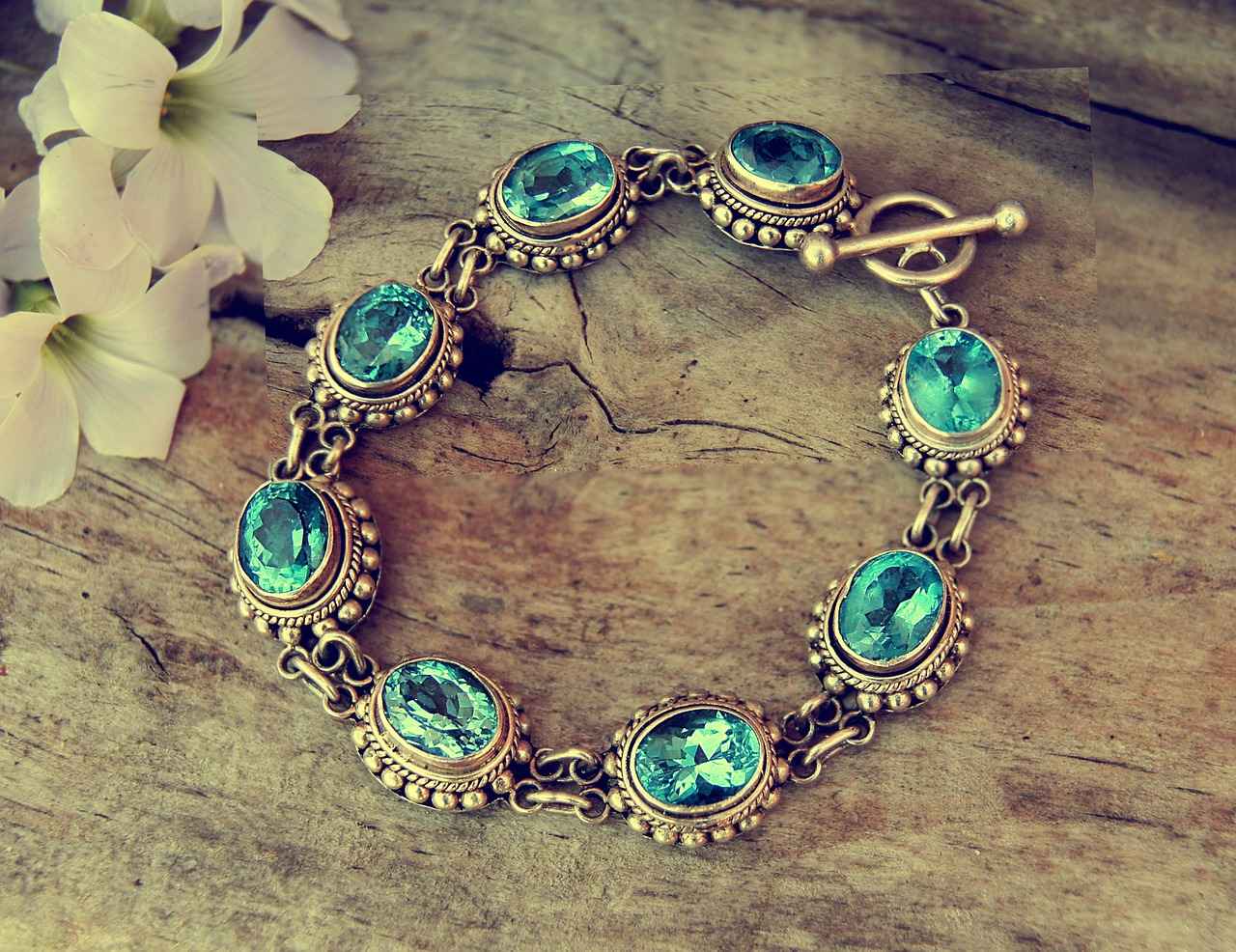
How to Prepare Your Jewelry for Sale?
Preparing your jewelry for sale is a crucial step that can significantly enhance its appeal and value. Whether you are looking to sell online or in person, taking the time to clean, appraise, and present your pieces effectively can make a substantial difference in attracting potential buyers.
Cleaning your jewelry is the first step in preparing it for sale. A well-maintained piece can shine and attract buyers more effectively. Here are some tips:
- Use Mild Soap and Water: For most jewelry, a simple solution of warm water and mild dish soap can do wonders. Soak the jewelry for a few minutes, then gently scrub with a soft brush.
- Avoid Harsh Chemicals: Steer clear of bleach or abrasive cleaners, as they can damage the finish and materials of your jewelry.
- Dry Thoroughly: After cleaning, ensure your jewelry is completely dry to avoid any moisture-related damage.
Accurately appraising your jewelry is essential to set a competitive price. Here are steps to follow:
- Research Comparable Sales: Look at similar pieces online to gauge their selling prices. Websites like eBay and specialized jewelry marketplaces can provide valuable insights.
- Consult a Professional Appraiser: For high-value items, consider hiring a certified appraiser who can provide an official valuation.
- Understand the Four Cs: Familiarize yourself with the cut, clarity, color, and carat weight of gemstones, as these factors significantly influence value.
The presentation of your jewelry can greatly impact a buyer’s perception. Here are some effective strategies:
- Use High-Quality Images: If selling online, invest in good photography. Ensure your images are well-lit and showcase the jewelry from multiple angles.
- Write Detailed Descriptions: Provide potential buyers with thorough descriptions, including the materials, dimensions, and any unique features of the piece.
- Consider Packaging: For in-person sales, present your jewelry in an attractive box or pouch. Good packaging can enhance perceived value.
Beyond cleaning, appraising, and presenting your jewelry, consider these final tips:
- Be Honest About Condition: Disclose any wear or damage to maintain trust with potential buyers.
- Set a Fair Price: Based on your appraisal, set a price that reflects both the market value and your willingness to negotiate.
- Prepare for Questions: Be ready to answer inquiries about your jewelry, including its history and any certifications it may have.
By following these guidelines, you can enhance the appeal and value of your jewelry, making it more attractive to potential buyers. Whether you choose to sell online or in person, a well-prepared piece is more likely to find a new home at a price that reflects its true worth.

What Factors Influence Jewelry Pricing?
When it comes to setting the right price for your jewelry, understanding the critical factors that influence pricing is essential. Jewelry pricing is not just about the intrinsic value of the materials used; it also encompasses various elements that can significantly affect the final price. This article delves into the most important factors to consider when determining the value of your jewelry pieces.
The materials used in jewelry play a fundamental role in its pricing. Precious metals such as gold, silver, and platinum are valued not only for their beauty but also for their intrinsic worth. For instance, the price of gold fluctuates based on market conditions, which can directly influence the price of gold jewelry. Additionally, gemstones such as diamonds, sapphires, and emeralds have their own grading systems, including factors like cut, clarity, color, and carat weight, which can significantly impact their value.
Another critical factor affecting jewelry pricing is the level of craftsmanship involved in creating a piece. Handmade jewelry often commands higher prices due to the labor-intensive processes and the skill required to produce unique designs. Artisan pieces that showcase exceptional craftsmanship or innovative techniques can attract collectors willing to pay a premium. On the other hand, mass-produced items typically have lower price points, as they lack the uniqueness and personal touch of handcrafted jewelry.
The reputation of the brand can also play a significant role in determining jewelry prices. Established brands with a history of quality and luxury often price their items higher due to their brand equity. Consumers are often willing to pay more for products from reputable brands, as they associate these brands with quality assurance and prestige. Emerging designers can also create a niche market by building a strong brand identity, which can help them command higher prices over time.
Market demand is a dynamic factor that can influence jewelry pricing significantly. Trends in fashion and consumer preferences can lead to fluctuations in demand for specific styles or materials. For instance, certain gemstones may become popular due to celebrity endorsements or fashion trends, resulting in increased prices. Conversely, if a particular style falls out of favor, its value may decrease. Staying informed about current trends and consumer preferences can help sellers set competitive prices.
The condition of the jewelry and its provenance, or history, can also impact its value. Vintage or antique pieces that are well-preserved may fetch higher prices due to their rarity and historical significance. Additionally, jewelry with a documented history or that has been worn by notable figures can command a premium. Sellers should ensure that they provide potential buyers with as much information as possible about the piece’s history to enhance its appeal.
Understanding these critical factors—materials, craftsmanship, brand reputation, market demand, and condition—will empower you to set a competitive price for your jewelry items. By taking the time to evaluate these elements, you can maximize your profits and ensure a successful selling experience.

How to Ensure a Safe Transaction When Selling Jewelry?
When it comes to selling jewelry, ensuring a safe transaction is of utmost importance. The jewelry market can be lucrative, but it also presents certain risks that sellers must navigate carefully. In this section, we will explore essential practices that can help you conduct secure transactions, whether you choose to sell online or in person.
Choosing the right payment method is crucial for a secure transaction. Here are some of the safest options:
- PayPal: This platform offers buyer and seller protection, making it a popular choice for online transactions.
- Escrow Services: Using an escrow service ensures that funds are held securely until both parties fulfill their obligations.
- Credit Cards: Accepting credit card payments can provide an additional layer of protection against fraud.
When selling jewelry in person, selecting a secure meeting location is vital. Consider the following:
- Public Places: Meet in well-lit, busy areas such as coffee shops or shopping malls to ensure safety.
- Bank Lobbies: Many banks offer a secure environment for transactions, often with surveillance cameras.
- Local Police Stations: Some police departments allow citizens to conduct transactions in their parking lots for added security.
Before completing a sale, it’s important to take certain precautions:
- Verify Buyer Information: Ask for identification and contact information to ensure you know who you are dealing with.
- Document the Transaction: Keep a record of the sale, including photos of the jewelry, payment receipts, and any correspondence.
- Trust Your Instincts: If something feels off about the buyer or the situation, it’s okay to walk away from the deal.
Understanding the potential risks can help you avoid pitfalls:
- Scams: Be aware of common scams, such as counterfeit checks or buyers who request to pay via untraceable methods.
- Shipping Issues: If selling online, consider using insured shipping methods to protect against loss or damage during transit.
- Personal Safety: Always prioritize your safety over the sale; if you feel uncomfortable, don’t hesitate to cancel the meeting.
Building trust with buyers can lead to smoother transactions:
- Provide Detailed Descriptions: Be honest and thorough in your jewelry listings, including any flaws or imperfections.
- Share Credentials: If applicable, share any certifications or appraisals to assure buyers of your jewelry’s value.
- Engage with Buyers: Promptly answer questions and communicate openly to establish a rapport.
By following these best practices, you can significantly reduce the risks associated with selling jewelry and ensure a safe and successful transaction. Whether you choose to sell online or in person, safety should always be a priority. With the right precautions, you can enjoy the process of selling your jewelry while maximizing your profits.
Frequently Asked Questions
- What is the best platform to sell my jewelry online?
There are several great platforms for selling jewelry online, including eBay, Etsy, and specialized jewelry sites like Worthy. Each platform has its unique audience, so consider what fits your jewelry style best!
- How do I determine whether to sell my jewelry online or in-person?
Think about your comfort level and the type of jewelry you’re selling. If you prefer a personal touch and immediate cash, in-person might be for you. However, if you want a broader audience and convenience, online selling could be the way to go!
- What should I do to prepare my jewelry for sale?
Cleaning your jewelry is essential! Make sure to polish it up, get an appraisal if possible, and take high-quality photos. Presentation is everything, whether online or in-person!
- What factors influence the price of my jewelry?
Several factors affect pricing, including the materials used, craftsmanship, brand reputation, and current market demand. Do your research to ensure you set a competitive price!
- How can I ensure a safe transaction when selling jewelry?
For online sales, use secure payment methods and ship with tracking. For in-person transactions, meet in a public place and bring someone along for added safety!

